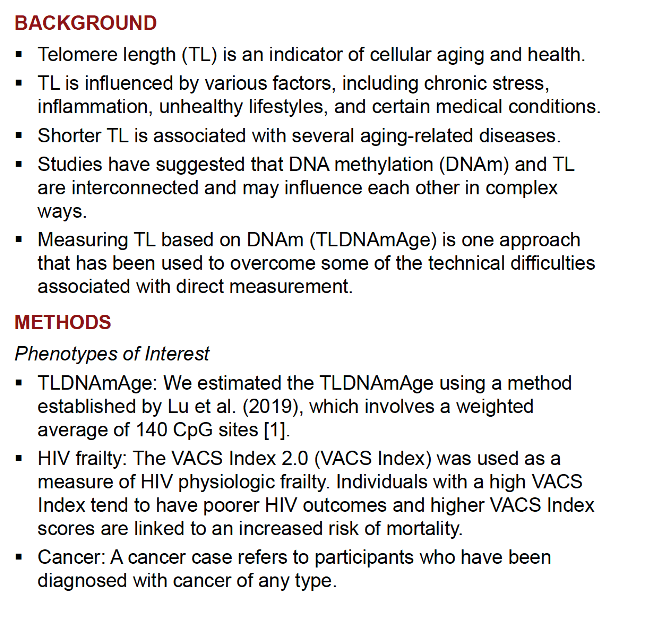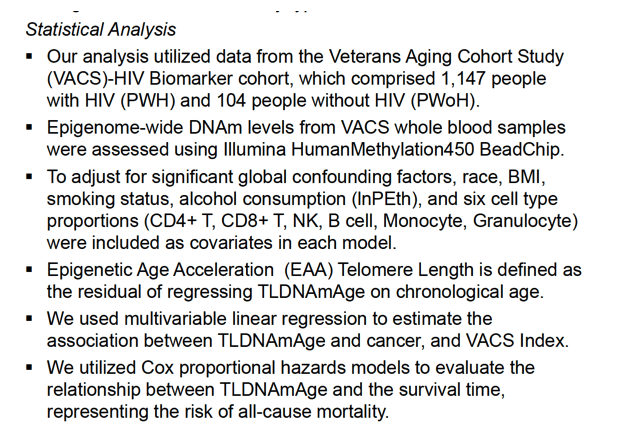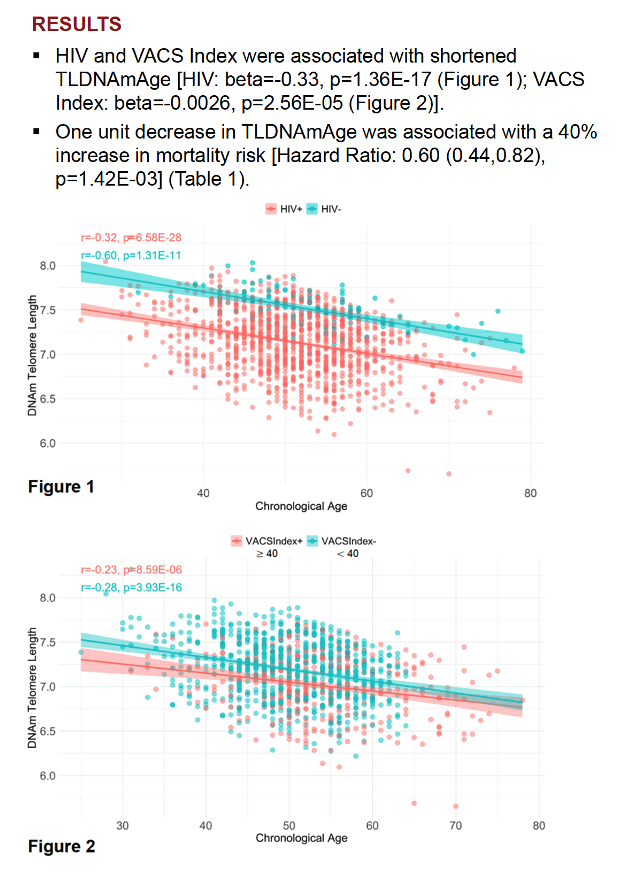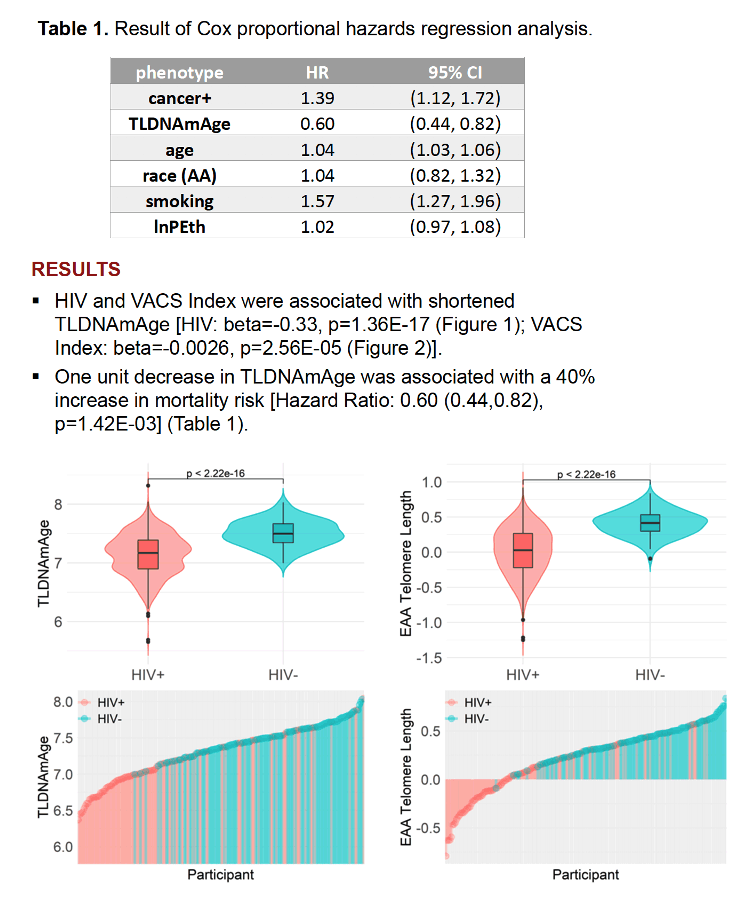 |
 |
 |
| |
DNA Methylation-Based Telomere Length Is Associated with HIV Infection and Cancer in Relation to HIV Frailty and All-Cause Mortality
|
| |
| |
CROI 2024 Mrch 3-6 Denver
Xiaoyu Liang1, Bradley E. Aouizerat2,3, Kaku So-Armah4, Mardge H. Cohen5, Vincent C. Marconi6, Ke Xu7,8*, and Amy C. Justice8,9,10*

Program abstract
Background: Telomere length (TL) is an important indicator of cellular aging. Shorter TL is associated with several age-related diseases including coronary heart disease, heart failure, diabetes, increased cancer risk, and osteoporosis. However, due to technical issues, directly measuring TL remains a challenge. Recently, a DNA methylation-based TL (DNAmTL) estimator has been developed. In this study, we determined the association of DNAmTL with cancer prevalence and mortality risk among people with and without HIV.
Methods: Data analyzed were from the Veterans Aging Cohort Study Biomarker Cohort. DNAm was assessed from peripheral blood mononuclear cells (Illumina HumanMethylation450 BeadChip and Illumina Human Methylation EPIC BeadChip). DNAmTL was subsequently estimated based on methylation profiles of 140 CpGs that prior work identified by regressing measured leukocyte TL on blood methylation data. Cancer prevalence was estimated from electronic medical records and cancer registry data. Mortality risk was estimated by the VACS Index 2.0, a measure of physiologic frailty, and by deaths from any cause over time. We used multivariable linear regression to estimate the association between DNAmTL and cancer, and VACS Index 2.0. We utilized Cox Proportional Hazards models to assess how DNAmTL is associated with the risk of all-cause mortality. Models were adjusted for self-reported race/ethnicity, batch, smoking status, alcohol consumption, and six cell types (CD4, CD8, NK, B cell, Monocyte, and Granulocyte).
Results: People with HIV (N=1,147) had shorter average DNAmTL than those without HIV infection (N=104) [beta=-0.24, 95% confidence interval (-0.31, -0.17), p=4.54E-12]. VACS Index 2.0 [beta=-0.0023 (-0.0034, -0.0012), p=2.32E-05] and higher cancer prevalence [beta= -0.03 (-0.06, 0.00), p=4.49E-02] were associated with shortened DNAmTL. One unit decrease in DNAmTL was associated with a 40% increase in mortality risk [Hazard Ratio: 0.60 (0.44,0.82), p=1.42E-03].
Conclusion: Physiologic frailty, cancer, and mortality are associated with DNAmTL.





|
| |
|
 |
 |
|
|